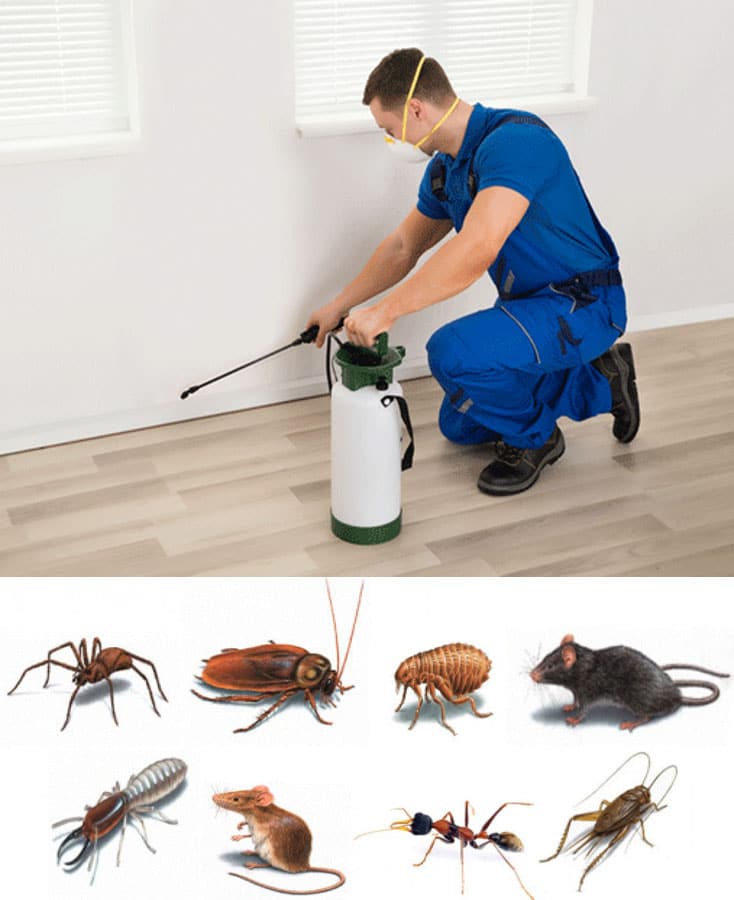A1 Pest Control Charlotte NC Bed Bugs - Professional Extermination Services
Wiki Article
Bed Bug Treatment Failure: Contrasting Chemical Vs. Non-Chemical Solutions
In the world of pest control, especially when dealing with the relentless issue of bed insects, the option in between chemical and non-chemical therapy options can be a pivotal one. Both techniques supply distinct benefits and drawbacks, influencing elements such as performance, safety and security considerations, and total cost. By analyzing the nuanced information of each method, a more clear understanding of which course to go after in attending to a bed pest infestation can be acquired.Performance of Chemical Therapies
Chemical therapies for bed bug invasions have been commonly recognized for their fast and potent effectiveness in getting rid of these parasites. When considering the effectiveness of chemical therapies, it is essential to recognize that they can offer a comprehensive and quick service to a bed bug problem. Specialist pest control specialists often depend on pesticides to target bed pests at different stages of their life process, consisting of adults, nymphs, and eggs. These chemicals generally work by interrupting the bed bugs' nerve system, leading to paralysis and eventual death.Moreover, chemical therapies have the benefit of providing residual impacts, suggesting that they can continue to get rid of bed bugs even after the first application. This residual activity is specifically beneficial in combating any type of potential re-infestations. In addition, the fast activity of chemical treatments can bring relief to people encountering serious bed pest invasions, permitting them to restore control of their home swiftly.
Safety And Security Problems With Chemical Solutions
One vital element that calls for cautious factor to consider when utilizing chemical remedies for bed insect therapy is guaranteeing the safety of passengers and the environment. Direct exposure to certain chemicals made use of in bed bug therapies can lead to breathing concerns, skin irritability, or other negative reactions, particularly in people with pre-existing problems or level of sensitivities.Additionally, the environmental effect of chemical services is another substantial factor to consider. Some pesticides made use of in bed insect therapies may be unsafe to useful pests, wildlife, and ecological communities if they leach right into the dirt or water systems. It is necessary to use chemical therapies deliberately, following security standards, and considering less harmful options to minimize these risks and make sure the reliable and safe administration of bed bug invasions.
Advantages of Non-Chemical Techniques
Thinking about the possible security concerns and environmental effect connected with chemical solutions for bed bug treatment, checking out non-chemical techniques offers an encouraging choice with a number of distinct benefits. Non-chemical methods offer a safer choice for families, particularly those with family pets, individuals, or children conscious harsh chemicals. These techniques eliminate the risks of direct exposure to toxic compounds, reducing the potential for damaging health and wellness impacts. Furthermore, non-chemical therapies are eco pleasant, as they do not contribute to air or water air pollution, making them a lasting choice for parasite control.In addition, non-chemical solutions can be reliable in targeting bed insects, consisting of hard-to-reach areas where chemical treatments may additional reading not penetrate. Approaches such as heat therapy, vacuuming, heavy steam cleaning, and bed mattress encasements supply detailed obliteration without making use of damaging chemicals. In addition, non-chemical methods can be much less disruptive, requiring minimal prep work and permitting quicker reentry right into treated areas. On the whole, opting for non-chemical bed insect therapy methods not just prioritizes security and ecological protection but also makes certain efficient and extensive bug control.
Limitations of Non-Chemical Treatments

Furthermore, non-chemical treatments typically call for multiple applications to attain effective removal. This can be lengthy and might not always assure full elimination of all bed insects and their eggs, particularly in hidden or hard-to-reach areas.
Furthermore, the success of non-chemical treatments greatly relies upon appropriate application and thoroughness, which can be challenging for individuals without expert competence. Insufficient application of non-chemical approaches might result in incomplete elimination, causing relentless problems and the demand for extra treatments.
As a result, while non-chemical therapies have their advantages, it is important to acknowledge these restrictions and consider them when determining one of the most effective approach for taking care of bed insect invasions.
Expense Comparison: Chemical Vs. Non-Chemical Options
Provided the limitations connected with non-chemical therapies, a necessary aspect to examine in the context of bed bug administration is the price contrast in between chemical and non-chemical alternatives. In comparison, non-chemical therapies like warm therapy or vapor can be much more pricey, with costs ranging from $1,000 to $6,000 for a whole home. While the first cost of chemical therapies may appear lower, multiple treatments may be required to totally eradicate the invasion, possibly increasing the general price.Conclusion

Taking into consideration the potential safety concerns and environmental impact linked with chemical services for bed insect therapy, discovering non-chemical methods offers an appealing option with numerous distinctive benefits.Given the restrictions linked with non-chemical therapies, a necessary facet to assess in the context of bed pest monitoring is the price contrast between chemical and non-chemical alternatives. In contrast, non-chemical treatments like warm treatment or vapor can be more expensive, with costs varying from $1,000 to $6,000 for a whole home. While the initial cost of chemical therapies might appear lower, several therapies may be required to fully eradicate the infestation, potentially boosting the overall expense.In verdict, when contrasting chemical and non-chemical bed pest treatment choices, it is vital to take into consideration performance, safety and security, advantages, constraints, and expense.
Report this wiki page